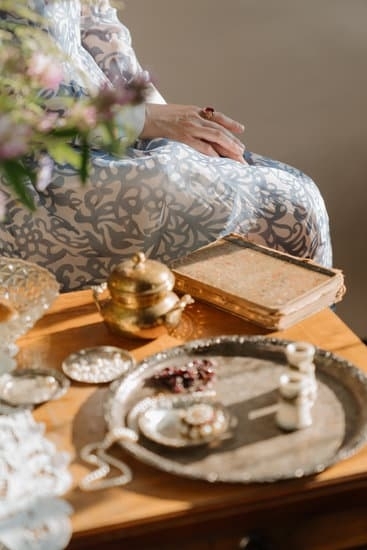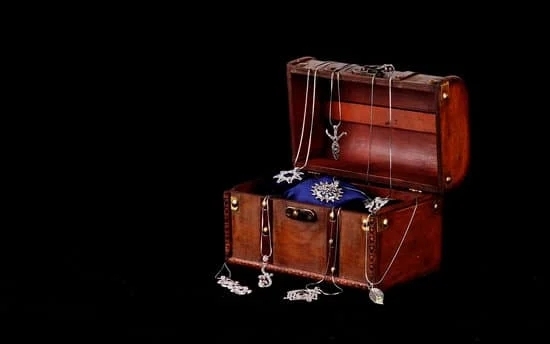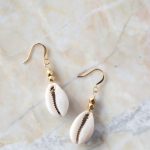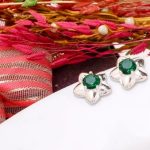Jewelry has been an important part of human culture for centuries and Jewelry design is as old as jewelry itself. Whether to display status, commemorate special occasions or simply decorate, people have had a long-standing relationship with jewelry. The history of jewelry can be traced back to Ancient Egypt from around 3100 bce where the oldest surviving piece of jewelry were created in gold and silver.
Ancient Egyptian Jewellery Design acted as a symbol of wealth and status, was heavily influenced by religion and beliefs, commonly involving geometric shapes or abstract designs that depicted animals or hieroglyphs. Even though it has changed over time, modern-day trends show evidence of continuing influence from the Ancient Egyptians.
Ancient Egyptian Jewellery Design & Construction: Materials & Techniques
The majority of jewellery produced by ancient Egyptians was either made using gold, silver and/or bronze alloys. In addition to these, materials like faience, gemstones and enamel were also incorporated into their designs, while non-metallic materials such as reeds, wood resin and glass beads were occasionally used to adorn their creations.
It is believed that their techniques varied depending on the material being used including casting moulding lapping and engraving among others which ultimately helped them create intricate pieces that are still admired today.
Influence On Modern Day Trends
Today’s jewellery trends are influenced by many sources including modern art movements like Art Nouveau yet the influence from Ancient Egyptian Jewellery Design remains strong every day throughout many different countries. Contemporary interpretations often borrow elements from Ancient Egyptian motifs such as scarab beetles or lotus flowers as well eye-catching colours reminiscent of turquoise and lapis lazuli drawn from traditional materials like faience which was immensely popular during this period in time.
Many people even continue wear replicas of ancient jewellery designs from Pharaohs such Tutankhamen further contributing to its influence in the modern world beyond just aesthetic value but symbolism too making it popular with new generations countless years after its original creation.
Materials Used
The ancient Egyptians had a strong affinity for the use and crafting of jewels and jewelry. Though people had been making jewelry since prehistoric times, the Egyptians are credited with being one of the earliest civilizations to establish advanced techniques for design and production. Jewelry held significant spiritual value in practically every area of cultural life, from weddings to burials, so specialized skills were developed by artisans who were highly regarded in their communities.
Egyptians used an assortment of materials when crafting any type of jewelry or ornamentation; gemstones, pottery and metal. Gemstones such as turquoise, carnelian and lapis lazuli were mined from their own country; other precious stones were imported from India, Sri Lanka and southern Europe.
Metal was just as precious as gemstones, though in often much more limited quantities due to cost and access. Copper was readily available while gold was scarce but highly valuable – multiple techniques were used to extract up to 24k fineness.
Silver was also used but wasn’t nearly as esteemed as gold until later periods when royal patronage grew popular. Pottery is an interesting material that had its uses beyond simply aesthetically pleasing trinkets: amulets with symbolic significance often crafted into pottery beads known in Egyptian hieroglyphics as “maat” (which translates literally “truth”). Beads crafted from bone, ivory, shells and seeds such as coconut or almonds were also common features in Egyptian jewelry pieces.
Egyptian motifs often featured Horus or Anubis-associated designs like eyes or wings alongside images of deities such as Isis or Osiris; circular symbols representing eternity or conjoined hands expressing eternal friendship/marriage even occasionally included Kushite religious iconography such as scarab beetles typical of Pharaoh Akhenaten’s reign. Additionally, shapes like looped ovals (called “Cartouches”) typically signified a worshiper’s name surrounded by hieroglyphic symbols (often serving as an identification marker when on official duty).
It was ever-present in necklaces, earrings, wristbands, armlets and pendants; sophisticated designs frequently utilized granulation – especially with gold pieces which could easily be adorned using small intricate grains amalgamated together with heat application resulting in fascinating patterns that survived through generations long after their craftspersons passed away into legend.
Jewelry Symbolism & Meaning
Ancient Egyptian jewelry holds a powerful energy and has a rich history of symbolism and meaning. jewellery was seen as more than just something to adorn the body; it was an expression of one’s social status, associated with signs of power and strength, and even served religious purposes in some cases.
Practically everyone in Ancient Egypt wore jewelry on a daily basis, from the Pharaohs to slaves. The materials used to craft an item would give clues to its owner’s wealth and spiritual standing throughout each era.
Gold was usually reserved for the Pharaohs or gifted as part of special offerings during festivities or funeral processes; it represented strength and longevity because of its resistance to tarnishing or corrosion. Silver was very rare in comparison and either melted down gold objects or taken from foreign empires that traded with Egyptians for goods such as grain, papyrus, honey, ivory statues, etc.
Copper beads were the most inexpensive choice materials that people wore since it came from their own region and deposition sites could easily be identified along riverbanks.
Egyptian hieroglyphic symbols were delicately inscribed into jewelry that served spiritual purposes. Jewelry can contain protective amulets meant to bring health, strength, prosperity and luck to those who owned them such as ankhs (key Osiris), Udjat spoons (eye of Horus) scarab beetles (symbolizing rebirth), etc.
Some people even stored cremes magic spells on tiny sheets called “magical papyri” which they inserted into necklaces or suspended off chains around their necks; this practice was believed to be capable of transferring magical power onto the wearer directly by touching the necklace when needed.
In Ancient Egypt jewelry was greatly treasured both spiritually and financially; not only did it bring boastful aesthetic embellishment but also provided safety against malicious intent by acting as ward-like talismans guarding both physical bodies as well as celestial souls. Furthermore treasures sourced from regions that usually held favor among gods became symbols deathless happiness throughout eternity , such is why Ancient Egyptians lavished their immense creativity into crafting exquisite loved pieces gleaming majesty until this day.
The Role of Color
Ancient Egyptian jewelry design is a fascinating topic to explore. It incorporates various colors, symbols and materials that were commonly used in jewelry crafting at the time. Jewelry was used for several purposes. From enhancing physical beauty and attracting mates, to acting as spiritual amulets, Ancient Egyptians viewed jewelry as an integral part of their lives from the dawn of civilization until its eventual decline.
One of the most notable features of Ancient Egyptian jewelry design is the use of color. Color was significant to the Egyptians for a few reasons – it was symbolic and could be used in to tell stories or convey messages through intricate images. Furthermore, different materials such as gold, silver, lapis lazuli and enameled glass could all be incorporated into the designs.
The colors most often used in ancient Egyptian jewelry can range from black and red carnelian stones to turquoise beads adorned with yellow gold settings. The combination of these colors often symbolize joy and happiness, expressed through illustrations on necklaces which may have contained birds or flowers that have been popularly featured in Egyptian artwork throughout history.
No other culture has had such a profound impact on modern day fashion than that of Ancient Egyptians. From thousands of years ago they reveled in wearing stunning pieces of work created by some of the world’s most skilled artisans and crafters. Designs featuring animals are still seen today – scarabs being used to increase wisdom or fertility charms derived from Horus mythology grace many pieces found around the world today.
Blues, greens, yellows and purples were also regularly used which symbolized wealth and power for their owners who were seen as royals due to how special their pieces were thought to be. All these elements go hand-in-hand in creating distinctive works that display fond memories of historical grandeur that only this ancient civilization holds true.
Necklaces & Earrings
Jewelry has been around in many forms since ancient times as a tool of adornment and social communication, but none quite as intricately detailed and beautiful as that made by the Ancient Egyptians. Jewelry from ancient Egypt was highly symbolic and represented an individual’s role and place in society. It was also believed to have protective powers against the evil eye – a spiritual malicious look cast upon someone by others who wish them harm.
The Ancient Egyptians were thought to be experts in crafting intricate jewelry for both women and men using various materials such as gold, silver, bronze and even emeralds, lapis lazuli, turquoise and carnelian. Among the most popular items were necklaces and earrings which were often intricately decorated with inscriptions of gods or symbols associated with life or death.
The designs of these pieces often had meanings beyond their ornamental purpose; they symbolized good health, fertility, protection from enemies or bad luck, or simply indicated one’s wealth or social standing. The wealthier citizens would dress themselves in the finest glittering jewelry whilst poorer individuals wore simpler versions with cheaper materials.
One notable example is Horus – the Egyptian sky god – whose eyes are seen in almost every piece of neckwear in Ancient Egypt. Men usually preferred necklace pendants shaped like weapons while women adorned themselves with lotus flowers – symbols of fertility – or amulets of bastet cats which provided protection from evil spirits.
Earrings were mostly crafted in shapes signifying stability such as columns or pyramids. Both earrings and necklaces were used less for aesthetics alone but more for the symbolism associated with each piece which could communicate meanings about a person’s faith and beliefs at the time.
As one can see, traditional Egyptian jewelry designs referred to mythological topics beyond mere decoration making it much more valuable than just a fashion statement.
Use of Religious Charms
The history of jewelry dates back to Ancient Egypt, with the use of jewelry dating as far back as 5,000 B.C. Ancient Egyptian jewelry design was highly symbolic and used in a variety of ways. It was used to express wealth and power by associating the wearer’s status with that of gods and goddesses, religious symbolism, and Scarab beetles.
One very popular aspect of Ancient Egyptian Jewelry design is the use of religious charms throughout the glyphs carved into their pieces. The pharaohs themselves were associated with Horus, with many amulets made in his image, while Ra was another popular deity from which symbols were taken for engraving or embedding into rings and other pieces of jewelry.
Many gods and goddesses including Isis, Osiris, Ptah, Khonsu and Bes also appeared in various depictions on amulets and bracelets as part of the protection these pieces provided.
Additionally, various hieroglyphic symbols from spells were inscribed into pendants talismans believed to give protection against disease or ward off evil spirits in much the same way we today may wear a Christian cross for spiritual support or protection. (insert comma)
The Scarab beetle was another popular symbol often embedded into Egyptian jewelry due to its association with rebirth and renewal due to its natural cycle such as emerging from its host egg and burying itself underground before emerging again during its lifecycle. It not only represented reincarnation but also abundance which complemented frequent themes involving endlessness embedded throughout all works of art in Ancient Egypt.
This continued even after the introduction Christianity when scarab symbols combined both religion’s symbolism seeing them worn simultaneously by those attempting to keep their traditional beliefs alive while expressing nascent ones acquiring new faith through an empire ruled by Constantine I (306-337). In conclusion, Ancient Egyptians had mastered jewellery design since 5 000 BC utilizing complex signs imbued sacred meanings using religious symbolism religions links for thousands years yet still greatly influencing our culture today.
Popular Styles & Designs
Jewelry has been a part of life since the dawn of civilization and ancient Egyptians were some of the most gifted jewelry-makers in the world. Ancient Egyptian jewelry design was utilized to demonstrate the power and prestige of their culture and artistry. Jewelry from this era are symbols that represent power, affluence, and spirituality.
Ancient Egyptians typically crafted necklaces from gold, silver, bronze, carnelian, different colored shells, faience (a glazed ceramic made from quartz sand), lapis lazuli and various other minerals. Often these pieces were adorned with amulets referring to many gods within the religious system like Bastet or Hathor, who represented fertility and abundance.
Additionally, royal figures were often depicted on pieces in celebration of them as divine healers. Egyptian necklaces were also created as offering necklaces where they offered pectorals with all their gods attached to it making it a more decorative piece for a deity’s altar or shrine.
Another popular material used in jewelry from ancient times was beads made out of stone or glass. As far back at the fourth millennium BCE (Before Common Era) beaded items have been found inside Royal tombs.
This indicates that beadwork has always played a major role in ancient Egypt’s ceremonial activities for nobility like Pharaohs kingly crowns or collars worn by priests. These items weren’t solely made for religious ceremonies either–beautiful beads were also used as fashionable accessories like bracelets earrings around the eyes and hairpieces meant to distinguish one’s beauty while not compromising wealth or status.
Conclusion
Jewelry has come a long way since its inception in Ancient Egypt. What was once used to adorn the Pharaohs and their families, is now worn by people all over the world. Jewellery was extensively crafted in Ancient Egypt to adorn Gods, royals and even day-to-day citizens. While many different materials were used, gold jewellery remained favoured by all.
The intricate patterns, symbols and images often seen in Ancient Egyptian jewellery can still be seen on necklaces, bracelets and rings of today. Many of these designs are inspired by hieroglyphics which could be symbolic or represent a god or pharaoh they were believed to protect the wearer from evil forces. Jewels featuring scarabs; a common symbol found in ancient works of art, also remain popular today with many believing that it holds power, good fortune and divine protection.
Aside from hieroglyphic carvings and animal shapes such as scarabs, Ancient Egyptians also heavily favoured geometric patterns including circles which have made their way into modern jewelry design over time with many cultures worldwide incorporating them into their work. Furthermore, colors like deep blue shades sourced from lapis lazuli along with green shades sourced from malachite are still being widely used today in fashionable pieces drawing inspiration from groundbreaking piercings worn by Egyptian nobility some 3600 years ago.
Overall, what is remarkable about the rich history of Ancient Egyptian jewelry is how much of the design principles behind them remain relevant to this day and how their inspirations endure despite the millennia that have passed between then and now. Contemporary jewelry encorporates some of these same motifs as a nod to our ancient past but combines them with modern materials for longevity for both beauty and durability alike.

Welcome to my jewelry blog! My name is Sarah and I am the owner of this blog.
I love making jewelry and sharing my creations with others.
So whether you’re someone who loves wearing jewelry yourself or simply enjoys learning about it, be sure to check out my blog for insightful posts on everything related to this exciting topic!





